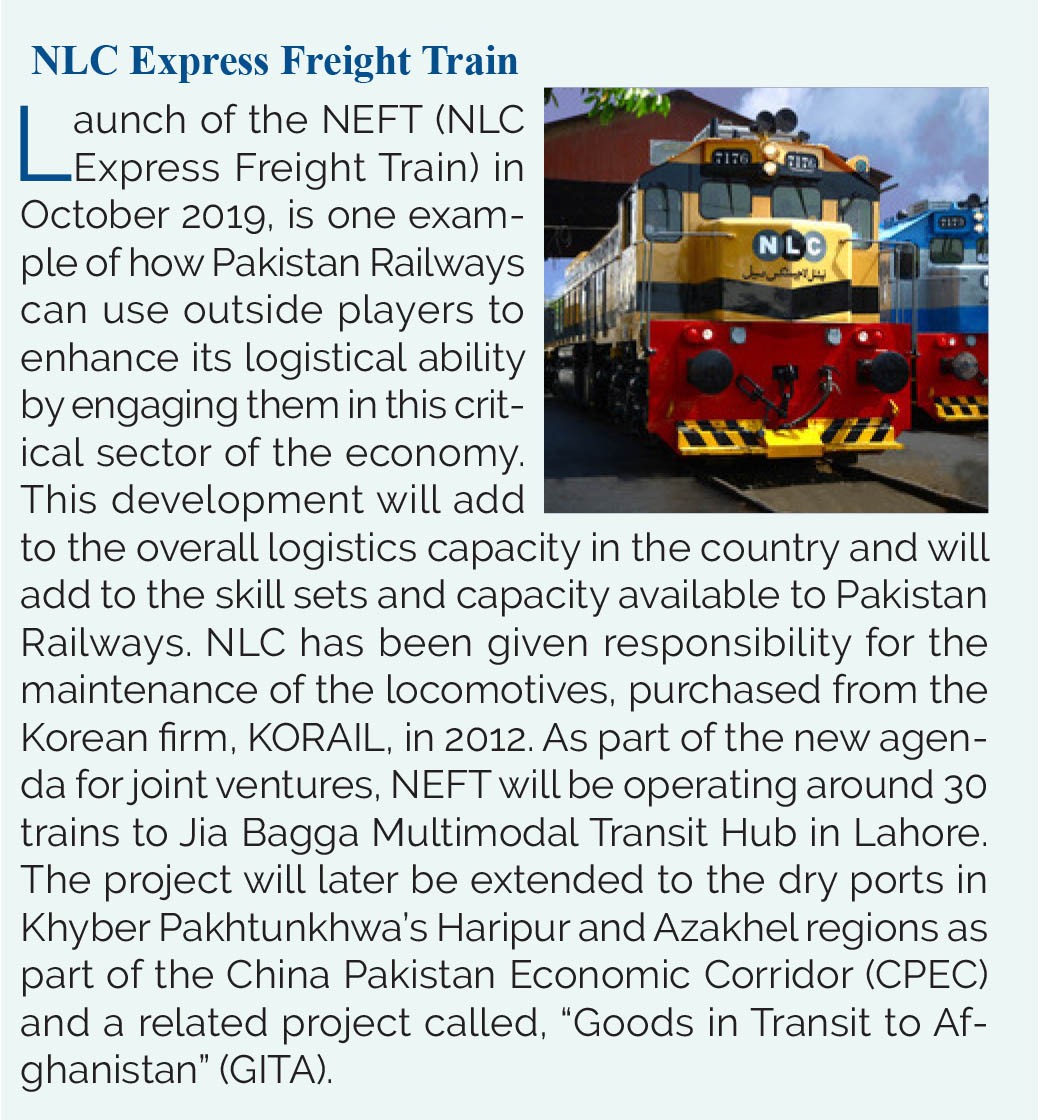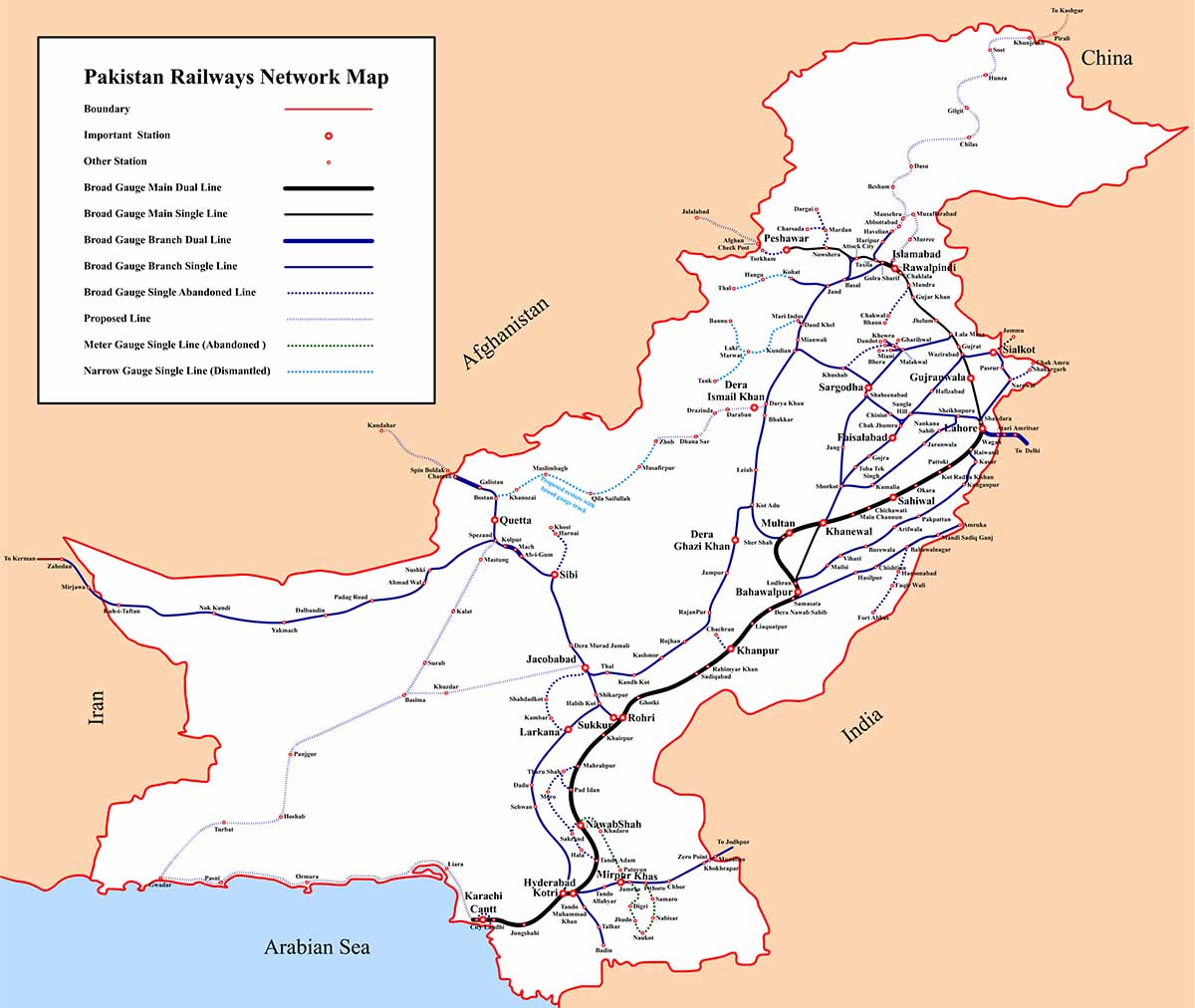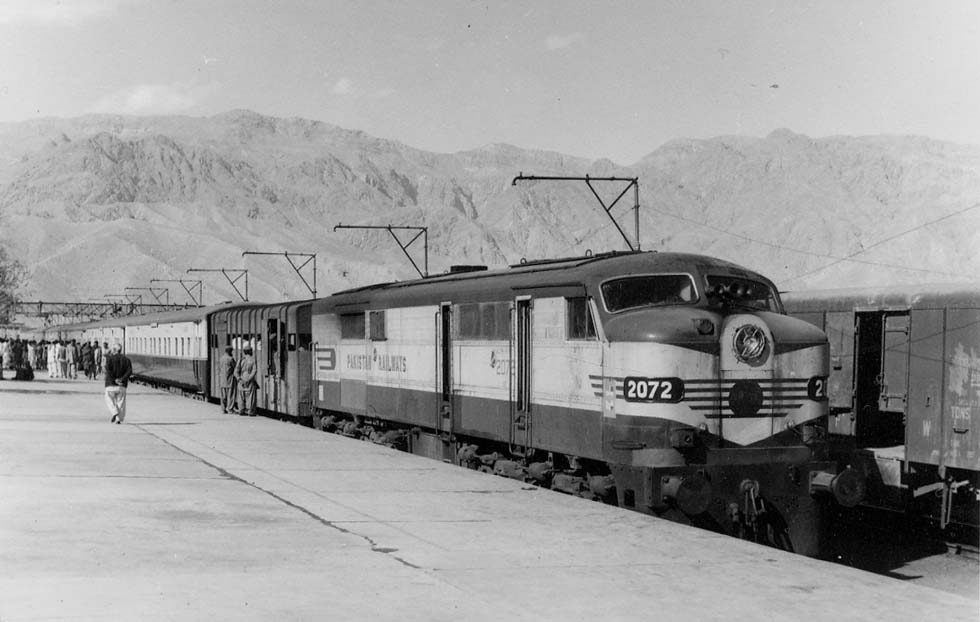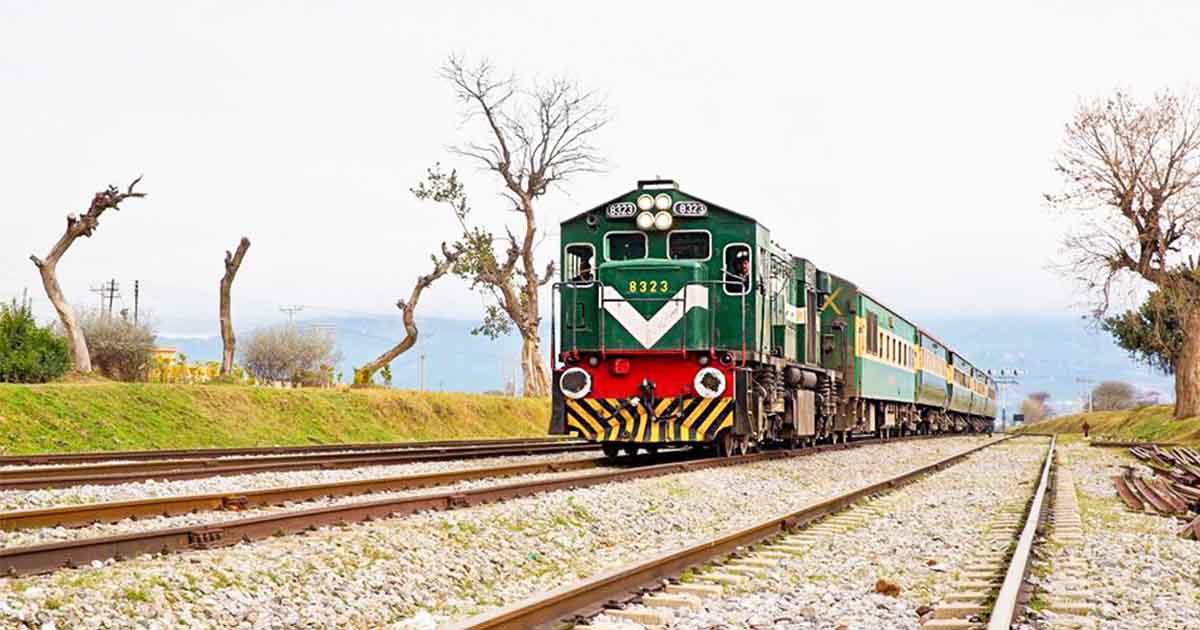Prime Minister Imran Khan recently speaking at a ceremony with regard to one of the government’s flagship initiatives, ‘Clean and Green Pakistan’, underlined the importance of restoring Pakistan to a sustainable climate balance that allows a return of the country from its fast depreciating climate situation and greenery; with severe consequences for air quality, especially of big cities like Lahore, which was recently ranked as the second-worst city globally in terms of air quality.
While there is the talk of planting trees – 10 billion during the tenure of the current government – among other initiatives, and which are indeed welcome, little is voiced in terms of improving the status of railways, in a much-needed effort to reduce road traffic, which has profusely been adding to air and noise pollution.
The government needs to understand the immense importance of railways for not only economic development, but also in terms of sustainably reversing the adverse climate situation that the country finds itself in because of the contamination of the environment.
Here, it needs to be pointed out that research indicates that globally, emissions of greenhouse gas have doubled since 1971, from the transport sector, and as much as 75 percent of the increase is coming from road vehicles.
Improved information systems are important for bringing transparency to the overall functioning of PR for not only itself, but also for the taxpayers, and in raising finances in terms of both debt and equity, gauging better funding gaps, and involving and retaining private sector; both domestic and foreign
At the same time, railways, indeed, are a lot more environment-friendly than road traffic, both in terms of emissions per traffic unit and energy consumption; a reduction in the latter, will in turn, also decrease the burden on foreign exchange reserves in terms of imported fuel.
In fact, as pointed out by Blumenfeld, Wemokar, Azzouz, and Roberts in an article (2019) ‘Developing a new technical strategy for rail infrastructure in low-income countries in Sub-Saharan Africa and South Asia’, “Railways are costly to build and maintain but can produce significantly lower external costs than other modes of transport, particularly when carrying freight…[reducing]…external costs of transport by at least 47.5% per passenger-km, and 75.4% per tonne-km when compared to road modes.
The biggest savings are found in environmental impacts, such as air pollution and climate change… [yet]…the inferior performance of most low-income countries in both passenger and freight transport is evident…[where for a]…few exceptions, low-income countries have experienced low growth in freight transport and a drop in the passenger railway market.”
Read more: Energy projects under CPEC: Financial lifeline for Pakistan
Unfortunately, all this research and multiple life-damaging accidents over the years, have not really pushed successive governments to take keen interest in either fixing the involved infrastructure and services, or improving the overall institutional performance of Pakistan Railways (PR) – a state-owned enterprise under the Government of Pakistan’s Ministry of Railways (MoR) that has suffered substantial financial losses over the years; not to mention the direct loss of human life in multiple accidents.
In fact, while PR was the predominant mode of passenger and freight transport up till the 1970s, there was a downhill trajectory for both since then at the back of deteriorating service, number of passengers and trains. To illustrate the depth of decline during 1955-60, 73 percent of the country’s freight traffic was handled by PR, which had diminished over the years to less than a paltry 4 percent in 2015.
While the current endeavors to revive PR under CPEC related projects are noteworthy. Yet, they only scratch the surface of the dismal situation of PR, which needs both institutional reform and infrastructural investments.
Pakistan Railways – the way forward
On the institutional front, one change that should take place rather quickly is the broader representation in the Railway Board (RB) – in existence since 1959, and reconstituted in 2015- for more informed decision making.
In addition to representation from railways, communications, and finance ministries, there should be additional representation from a) Ministry of Economic Affairs and Statistics to gain input on possible multilateral/bilateral technical and financial partnerships, b) Ministry of Law, to obtain more significant guidance on matters of law in tender, contracts, for example, c) Federal Board of Revenue, for allowing PR to make better and sustainable revenue-backed expenditures, d) Ministry of Planning and Development, with at least one additional representative from each of the four provincial planning and development departments, to evolve better development plans for PR that gel well with the overall development plans/ projects of the country, e) National and Provincial Disaster Management Authorities, to evolve better strategies for meeting accidents, and f) Ministry of Climate Change, to improve PR into a more environment-friendly mode of transportation.
Furthermore, MoR should expand the functioning of its underlying department of planning to improve the extent and quality of research work concerning PR’s institutional-governance and incentive-structures, infrastructural investments, and underlying economics of railways.
In this regard, the ministry should look to formulate a world-class ‘Railway Research Institute (RRI)’ that not only forges international linkages with multilateral organizations, like the World Bank, International Union of Railways, and International Railway Research Board, but also produces in-depth and frequent research on the many aspects of PR, taking into account both international best practices, and what works locally.

A representative from the proposed RRI should also be included in the RB for providing research-based technical input on future possibilities of improving railways and meeting current challenges.
Then, a particular focus of the Government of Pakistan should be to formulate an ‘Office of Independent Evaluation (OIE)’ for Pakistan Railways that looks at the performance of current projects, position of financial accounts, and also produces yearly performance reports on the functioning of PR’s underlying organizations like the Pakistan Locomotive Factory, and the Moghalpura Railway Workshops.
A representative of the proposed OIE should also be made a member of RB for allowing independent input on the performance of railways. Moreover, for focused and better planning and execution, Pakistan Railways needs to increase the number of its territorial operating divisions, which are currently only eight – Karachi, Lahore, Multan, Peshawar, Quetta, Rawalpindi, Sukkur, and Gwadar- for the whole country.
Going forward, in short to medium term, they should be increased to the number of administrative divisions in the country; and in the long-run should be made equal to hundred-plus districts of the country.
With Pakistan being the fifth most populous country at around 218 million people, it is indeed essential to increase the focus of PR in terms of both better institutional performance, and also with regard to, for example, increasing the length and quality of railway tracks, services of railways stations, and training staff working on trains.
Also, MoR should formulate plans to upgrade the performance of railways with regard to all three – urban, sub-urban, and regional – segments of passenger and freight railways. Moreover, the inter-connectivity of all three segments needs sound and detailed planning, so that they operate in an overall harmonized way.
Furthermore, the number of tracks and routes should be enhanced to include a higher number of a) mountain routes, b) tourism routes, and c) coastal and dry ports connecting routes.
Read more: NLC’s Freight Train (NEFT) points the way forward for Pakistan
Currently, the number and coverage of railways is limited, especially concerning mountain routes, a situation that limits cargo freight to mountainous areas through railways, enhances road-related pollution, and negatively affects reaching the tourism potential of the country.
Financing for infrastructural improvements need better institutional performance, reduced reliance on both government subsidies & bailouts, and commercial loans & development assistance.
Over the years, at the back of poor usage of development assistance by recipient countries, including Pakistan, has caused development partners to move more towards technical assistance targeted on institutional reform, from the previously greater focus on investments in infrastructure to a) reducing funding gap, b) mitigating financial risks, and c) engaging the private sector.
A funding gap appears when a rail project is unable to generate sufficient revenue over its lifecycle to cover operating and capital costs. Two ways of reducing a funding gap include a) increasing funding, for example through subsidies, and government capital grants, among others, and b) reducing project costs.
At times, the funding gap is filled with financing, for example, through various forms of debt, capital leases, and equity, among others, are made available at the back of a government pledge that it will service the debt if the project is unable to through the revenue it generates.

A project with a funding gap is generally not financed due to the involved risks in terms of project’s likely lack of ability to repay the debt through a future revenue stream. The burden of government-backed liabilities of state-owned enterprises, including that of PR, has grown tremendously over the years, and it is vital that technically sound projects are envisaged that have the least risks of ending up with funding gaps, and government guarantees for financing purposes.
Moreover, the government needs to screen better in terms of selecting only those projects with funding gaps that have strong welfare consequences. In a related sense, projects envisaged need to be technically sound, so that financing risks are reduced to a minimum. It is crucial for raising finances from commercial lending entities, and also in attracting domestic and foreign investors.
Two significant risks here are related to a) better overall governance of the railways sector, especially which brings assurance to investor that the rules governing the project will not be changed in a way that reduces the initially envisaged future returns on project, and b) good reputation of PR’s corporate governance, in terms of making rational and commercially viable decisions that will continue to allow the project retain its ability to pay back investors.
Any reform package for PR needs to internalize steps to improve on these counts. Essential resources for MoR for reforming the corporate governance include ‘”Guidelines on the Governance of State-owned Enterprises” and the “Principles of Corporate Governance” prepared by the Organization for Economic Co-operation and Development (OECD)’.
Read more: Pakistan Railways bringing in three new services
An essential way of attracting the private sector to invest in the projects of PR is through the creation of public-private partnerships. According to the World Bank’s 2017 report titled ‘Railway Reform: Toolkit for improving rail sector performance’, it is indicated that ‘a public-private partnership (often referred to as PPP, P3, or 3P) in railways is a contractual arrangement between government and private investors to provide public rail infrastructure and/or services and to share the risks associated with those investments and/or operations in some way.
Such arrangements include private ownership and/or operation of trains, but typically include financing and management of infrastructure and services.’ There are many ways in which PR could forge PPPs, some of which include ‘(i) transfer existing assets; (ii) provide land; (iii) finance part or all of the initial investment in infrastructure; or (iii) provide a revenue guarantee through a long-term contract.’
Here, it is crucial to understand that ‘at the end of the contract, assets are transferred to the government at a pre-determined price.’ Overall, the above are all effective ways of engaging the private sector.
It is pertinent to note that almost nowhere globally has it ever happened that the entire national rail network was offered for outright privatization, mainly because of the strategically important nature of railways, as a mode of transportation, in carrying freight and passengers.
For example, in Canada, the Canadian National Railways (CNR) was created in 1918-23, through a merger of many private railways going bankrupt. Similarly, in Australia and Canada, while the private sector was encouraged to develop railways for the exploitation of mineral deposits in some instances yet the policy ensured that ‘if a state-owned railway network exists, private railways are often prohibited from competing directly with it.

Thus, some private railways are permitted to serve only their parent mining companies’. A similar policy could be adopted in Balochistan, for example, in terms of attracting the private sector to participate with PR in assisting in the overall exploration of mineral and other natural resources. Such discussion should internalize in the overall reform of PR with regard to privatization.
An important area of reform for MoR to undertake is the ‘electrification’ of railways, which are essential for moving towards high-speed train operations of above 160-kph. In this regard, the World Bank indicates, “To reduce dependence on diesel fuel and provide higher capacity operations, railways turned to electrification, usually using overhead catenary systems to deliver electricity.
Electric locomotives can have higher power density—more horsepower or kilowatts per ton of locomotive—which can haul trains at higher speeds and up steeper grades than diesel locomotives.” Therefore, such a shift for PR is vital for high-density operations, to save on imported diesel costs, becoming more environment-friendly at the back of fewer carbon emissions, and for enabling faster passenger commuting.
Another area of reform is about improving information systems of PR, which according to the World Bank“…are among the most critical investments for commercial railways, particularly for revenue, cost accounting, and general ledger systems that have a level of detail that facilitates accurate tracking of railway costs and revenues.
Read more: Pakistan Railways on the right track
Railways must be able to analyze complex data on costs, production statistics, and revenue along several dimensions.’ It is indeed a weak link in the overall functioning of PR, and one of the main reasons for its lack of ability to accurately reflect on and reform its processes.
Improved information systems are important for bringing transparency to the overall functioning of PR for not only itself, but also for the taxpayers, and in raising finances in terms of both debt and equity, gauging better funding gaps, and involving and retaining private sector; both domestic and foreign.
Then is the matter of human resources involved in railways. PR, like almost any other railways, is generally labor-intensive, given the complexity of railway business and need for engaging a wide array of technical skills and crafts, not to mention the sheer size of its operations being very large and the high level of frequency of traffic involved.
Labour-incentive structures and hiring screening processes need to be reformed tremendously in the case of PR, which has also remained influenced by sub-optimal, politically influenced hiring cycles over the years. This has also kept the technical capacity of PR weak and limited, which needs to be increased through hiring competent professionals.
Moreover, staff providing various services to passengers also requires training in general, and better hiring needs to take place in this regard. Overall, in relation to human resources involved, the government also needs to evolve a mechanism to ‘right-size’ the staff. It is vital for raising both the productivity of PR and also for shedding excess and inefficient staff.
Dr. Omer Javed is an institutional political economist, who previously worked at International Monetary Fund, and holds a Ph.D. in Economics from the University of Barcelona. He tweets @omerjaved7.
The views expressed in this article are the author’s own and do not necessarily reflect the editorial policy of Global Village Space.













